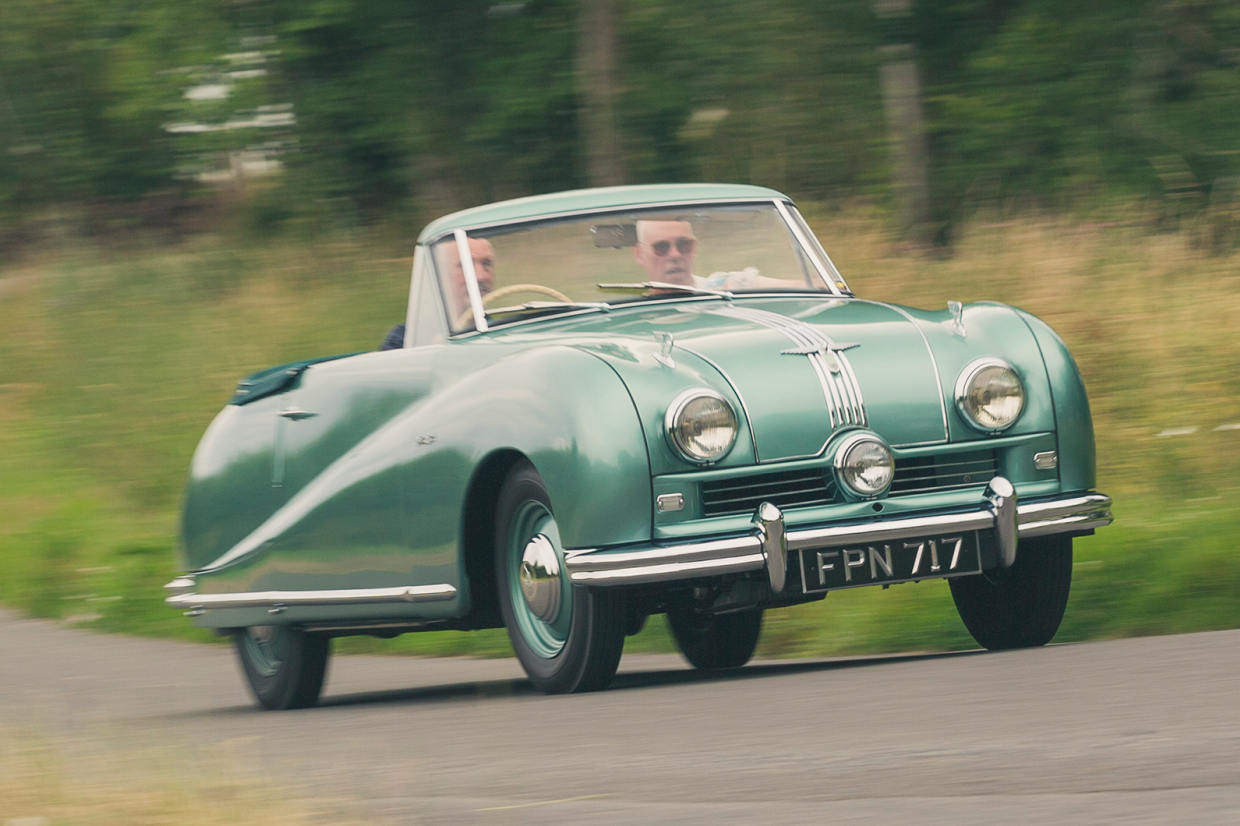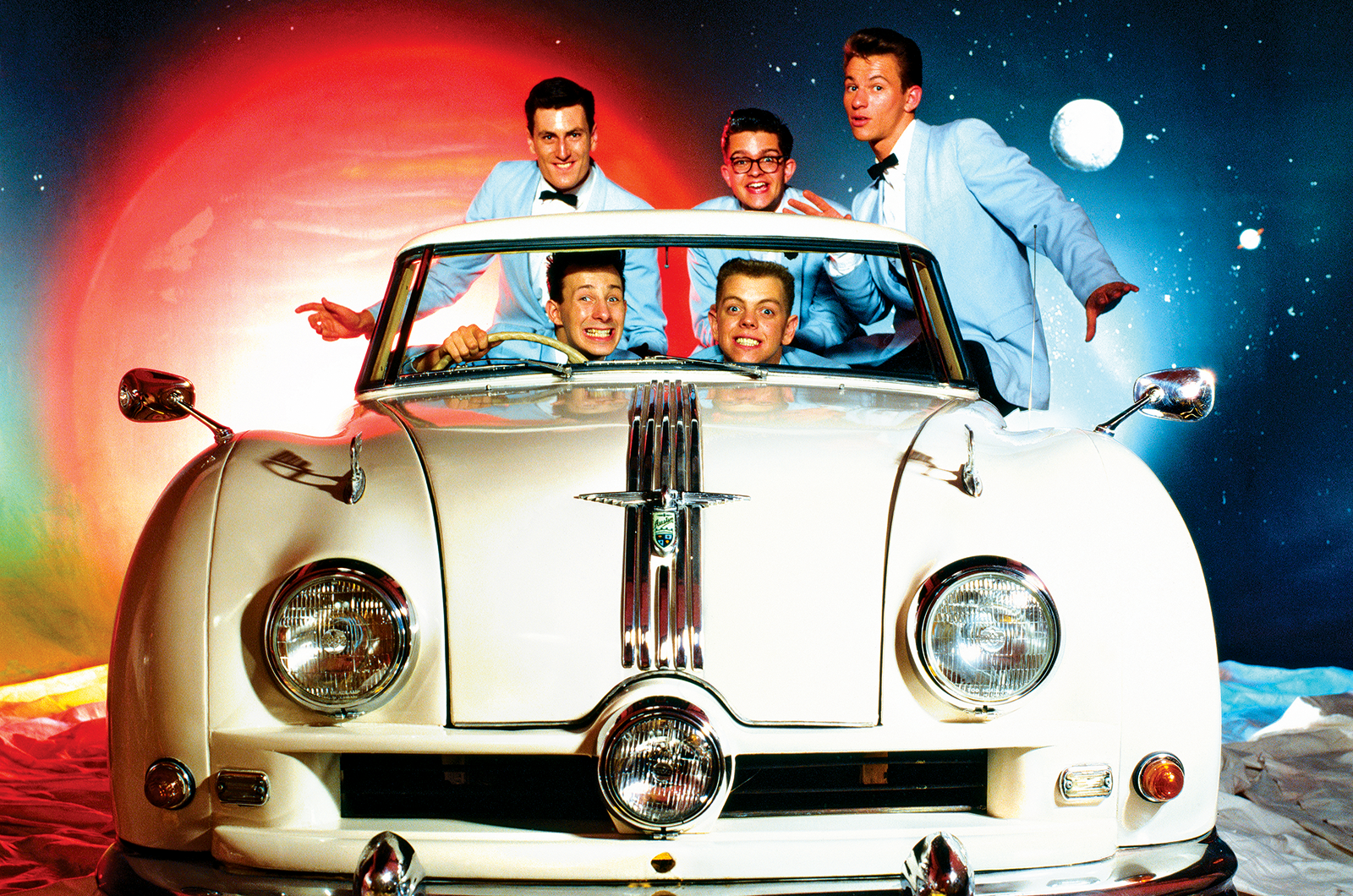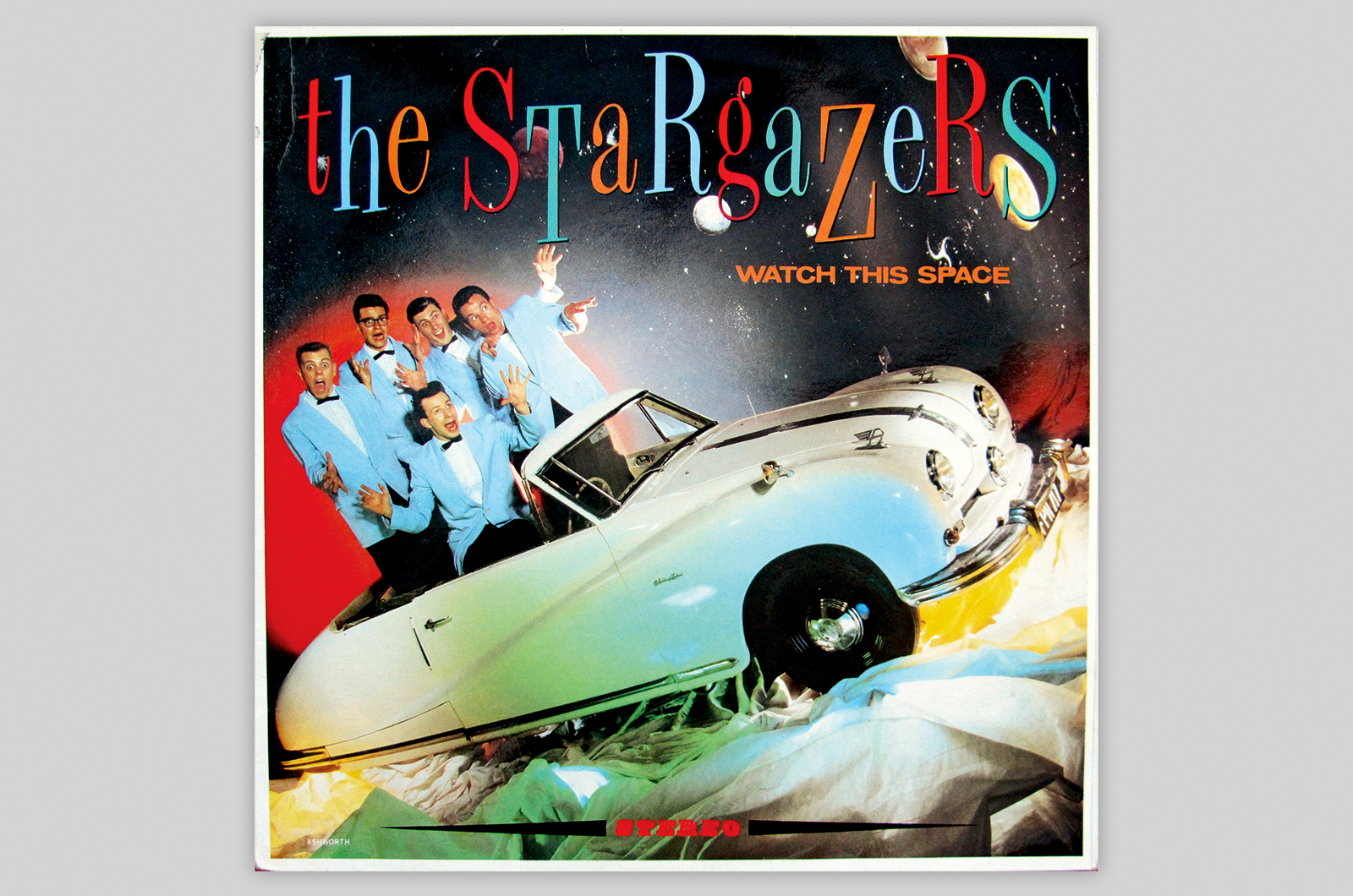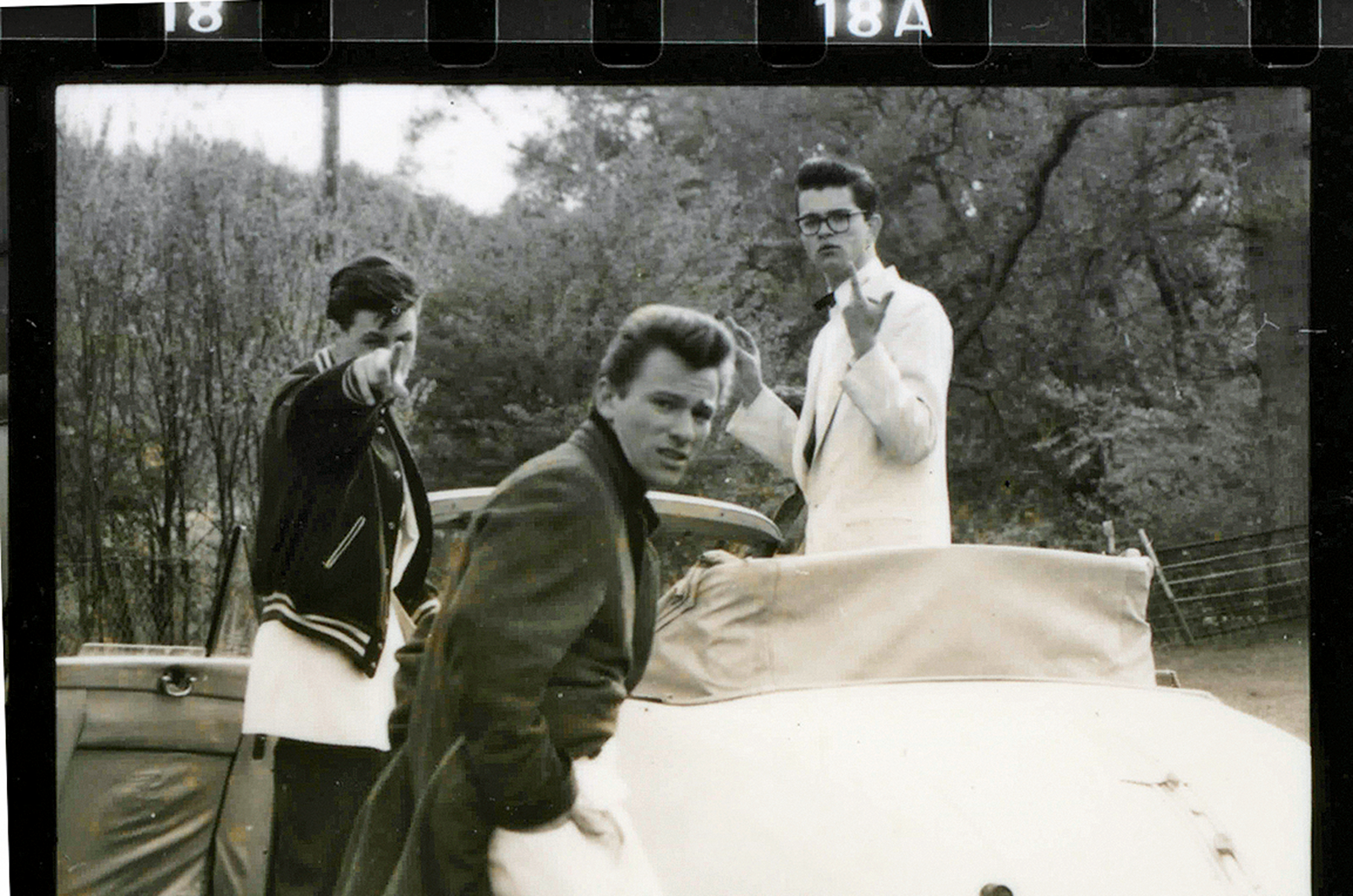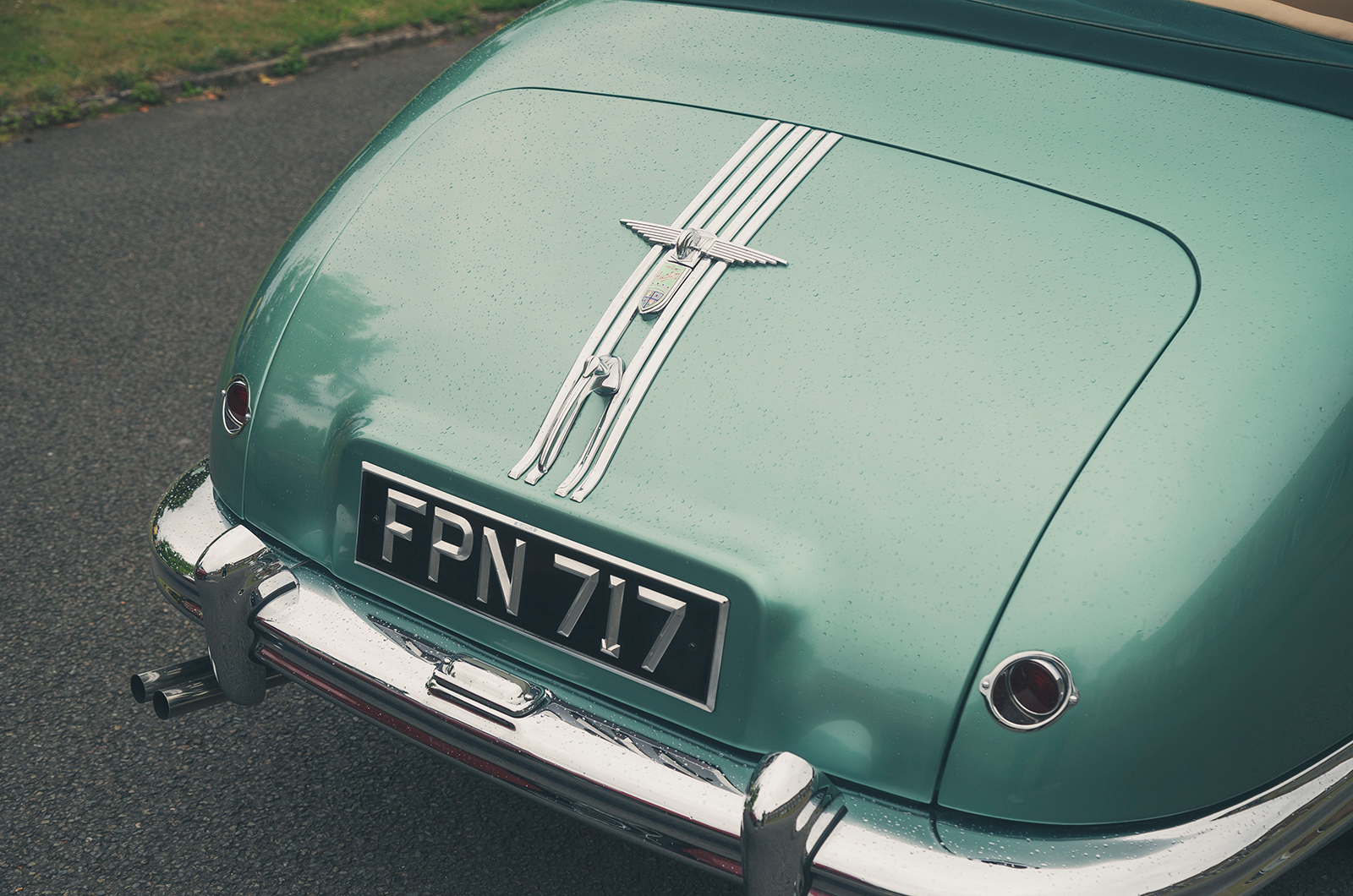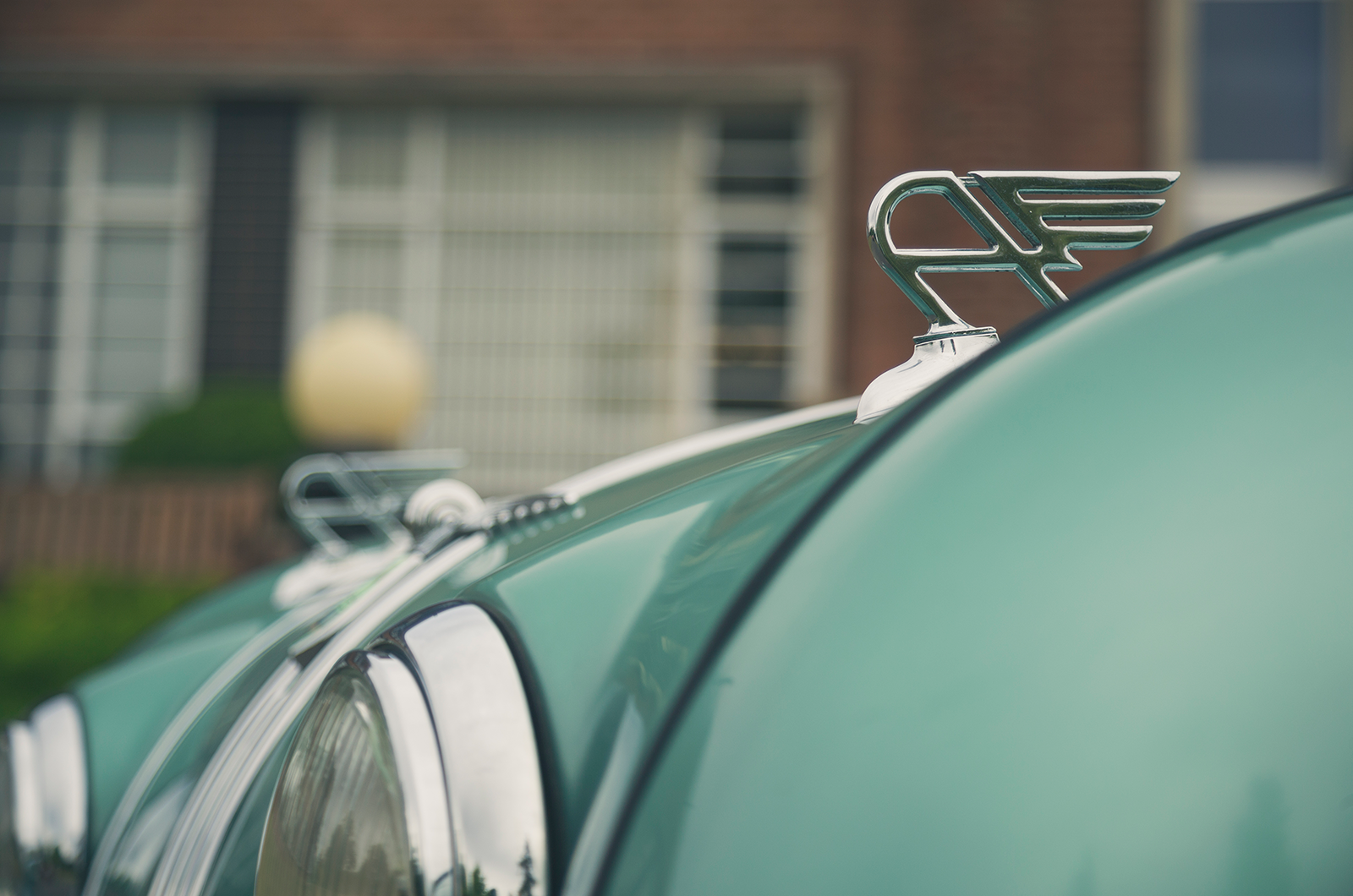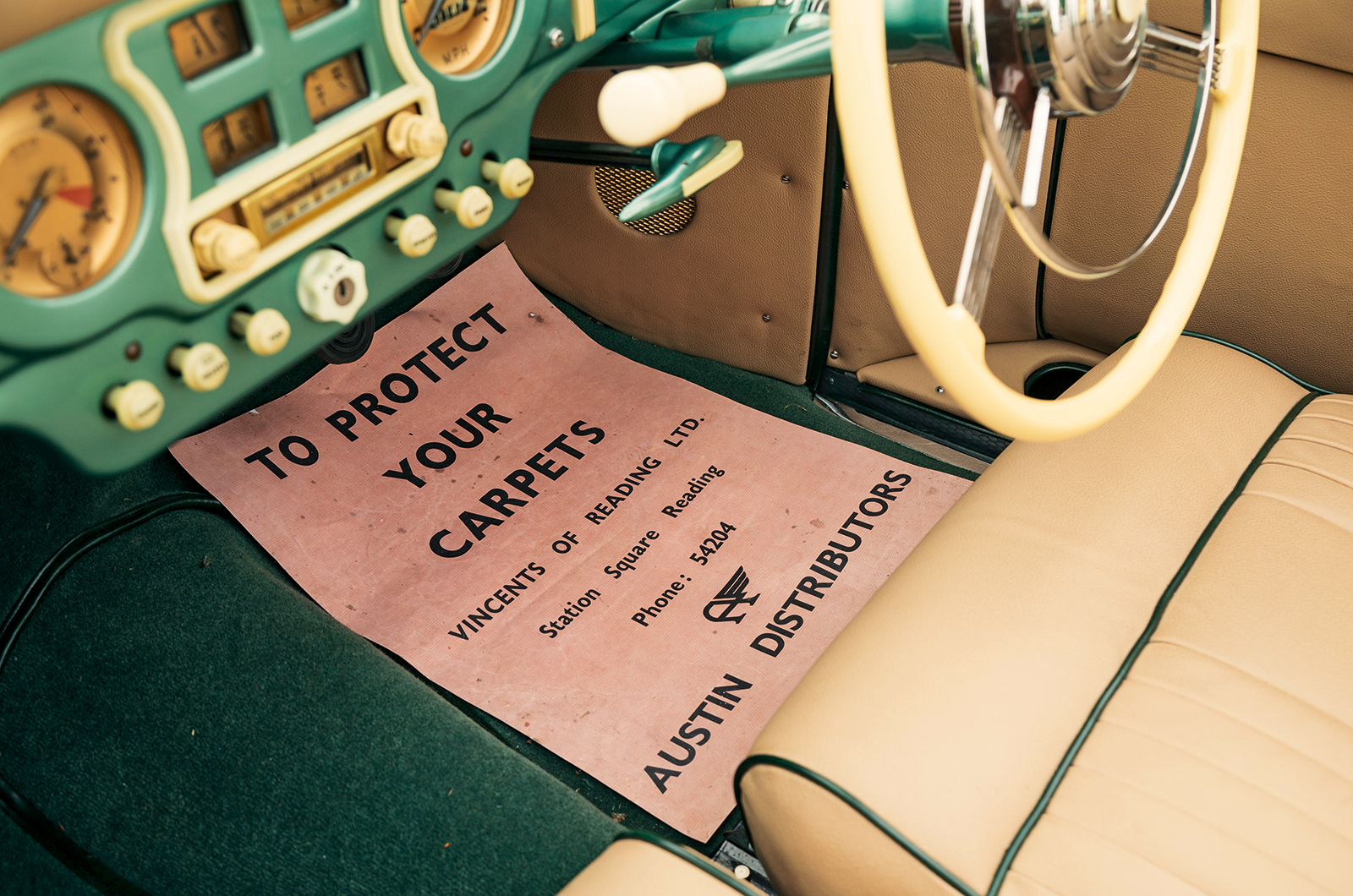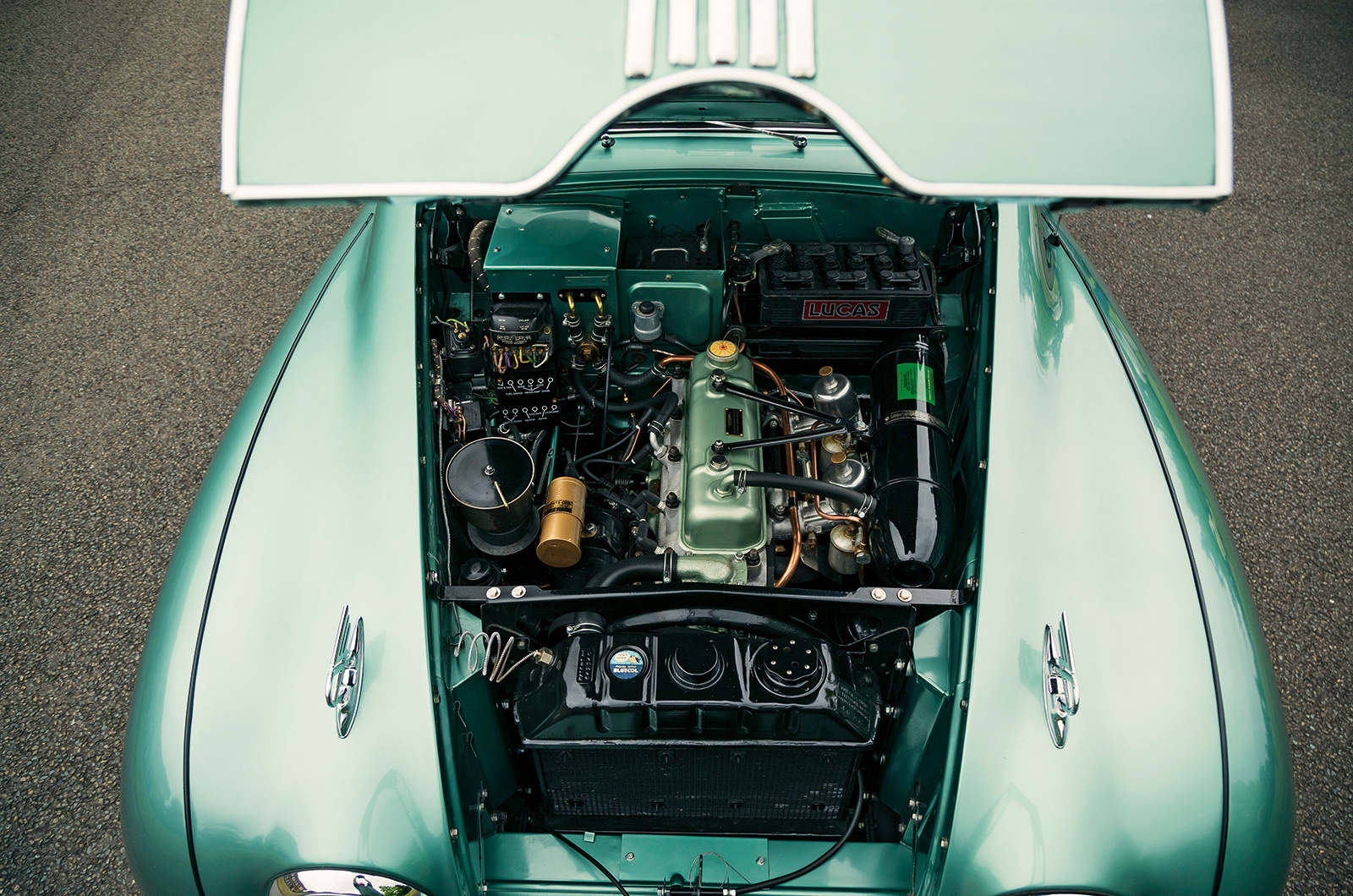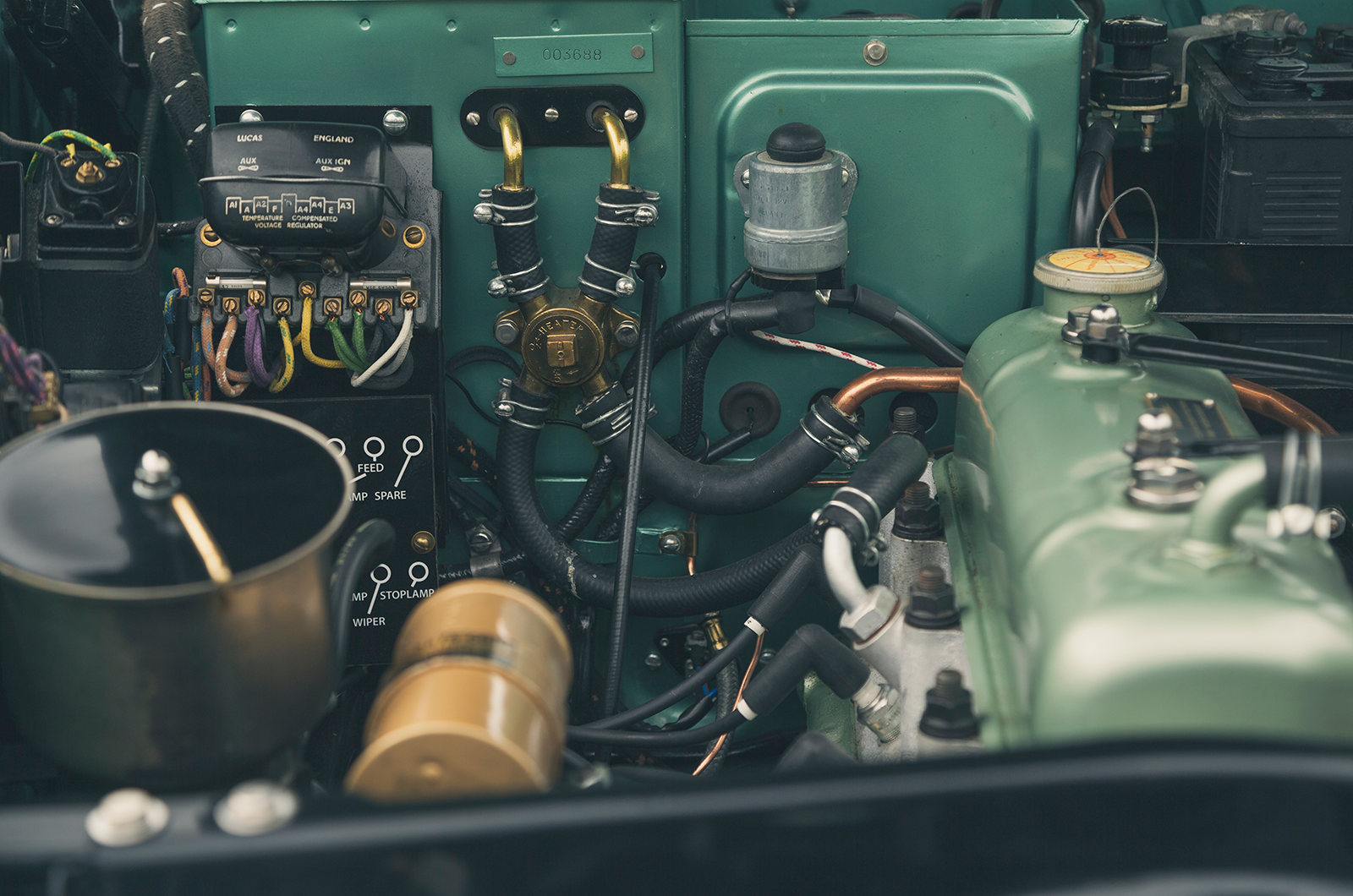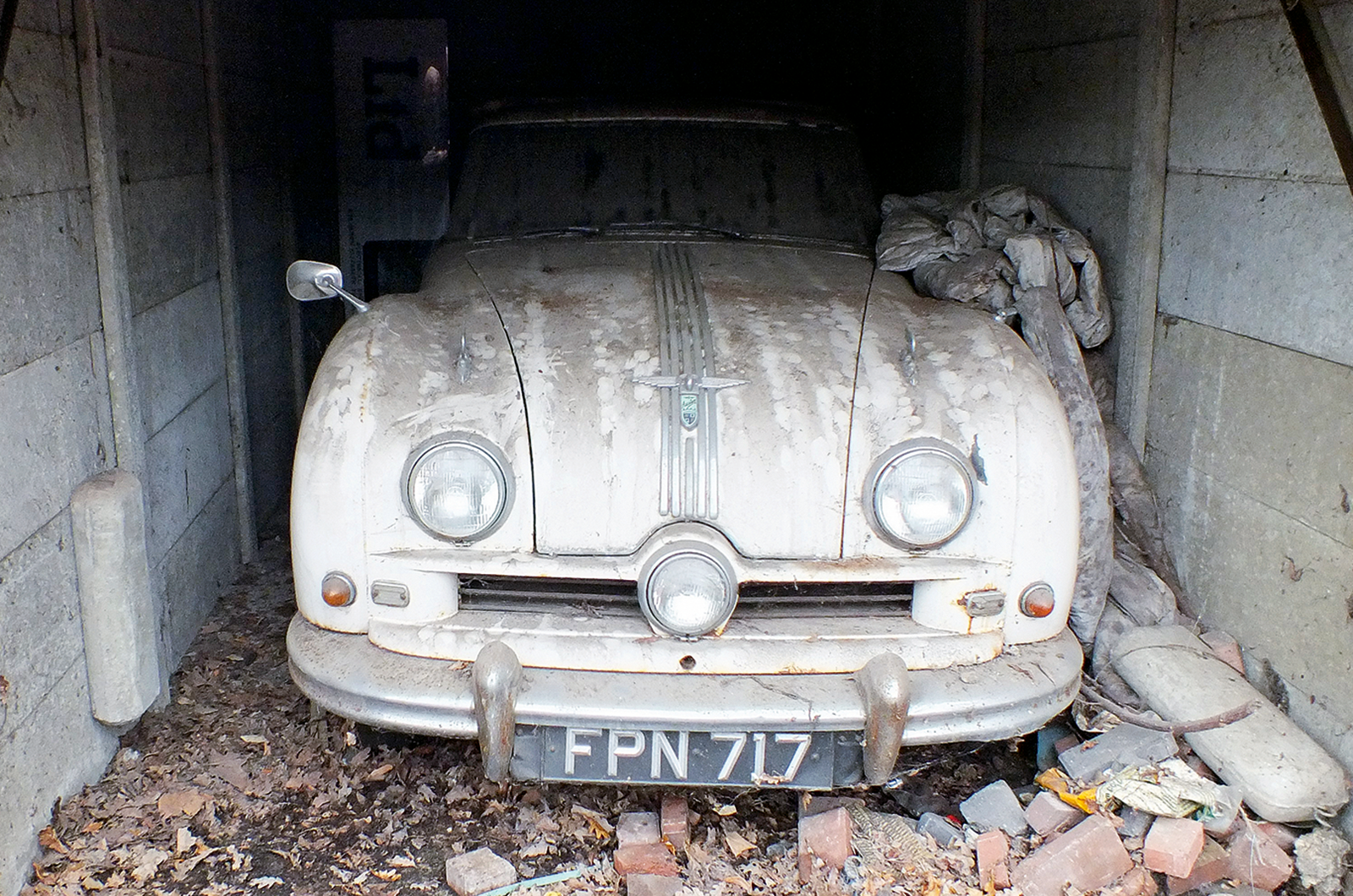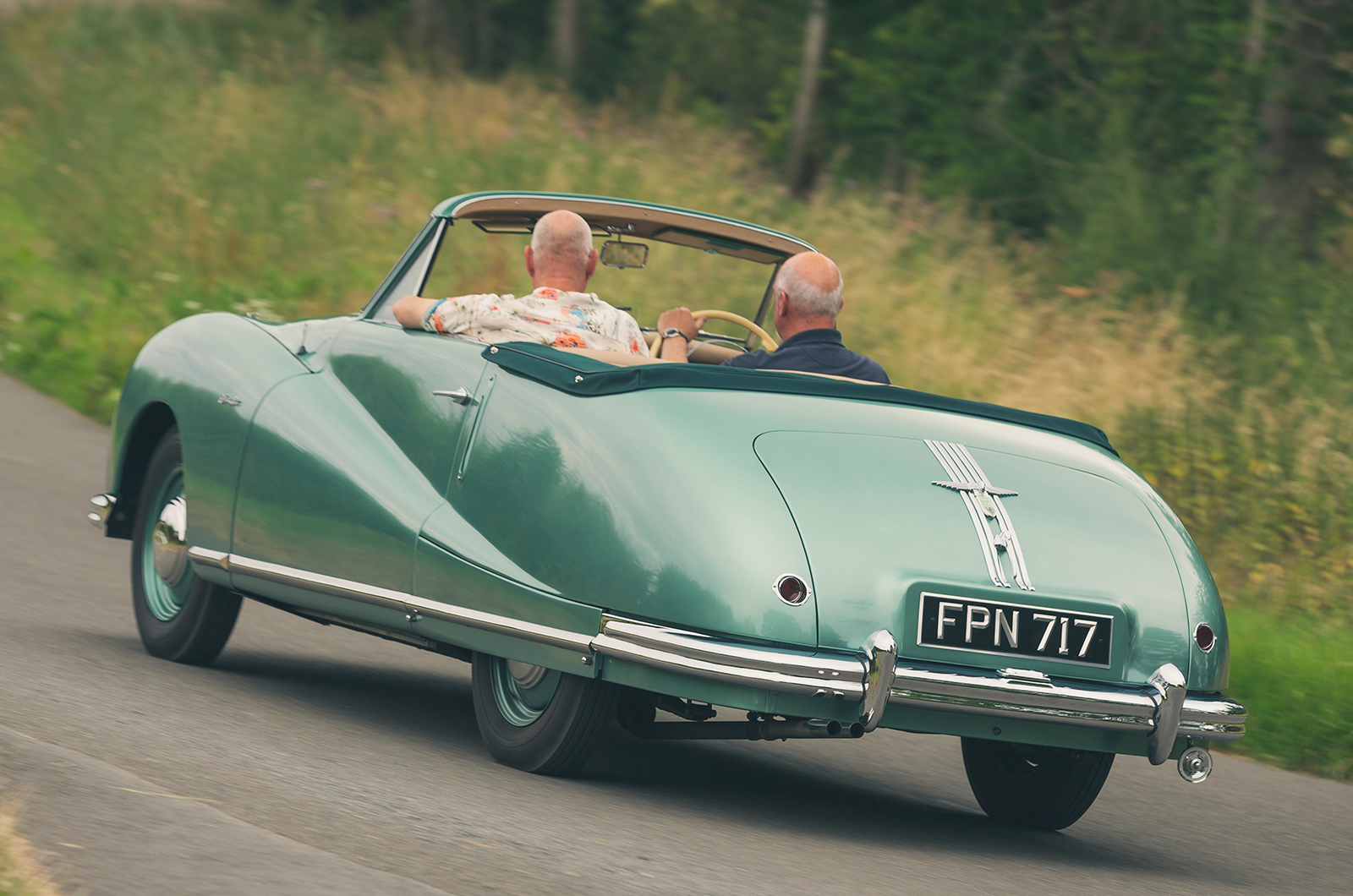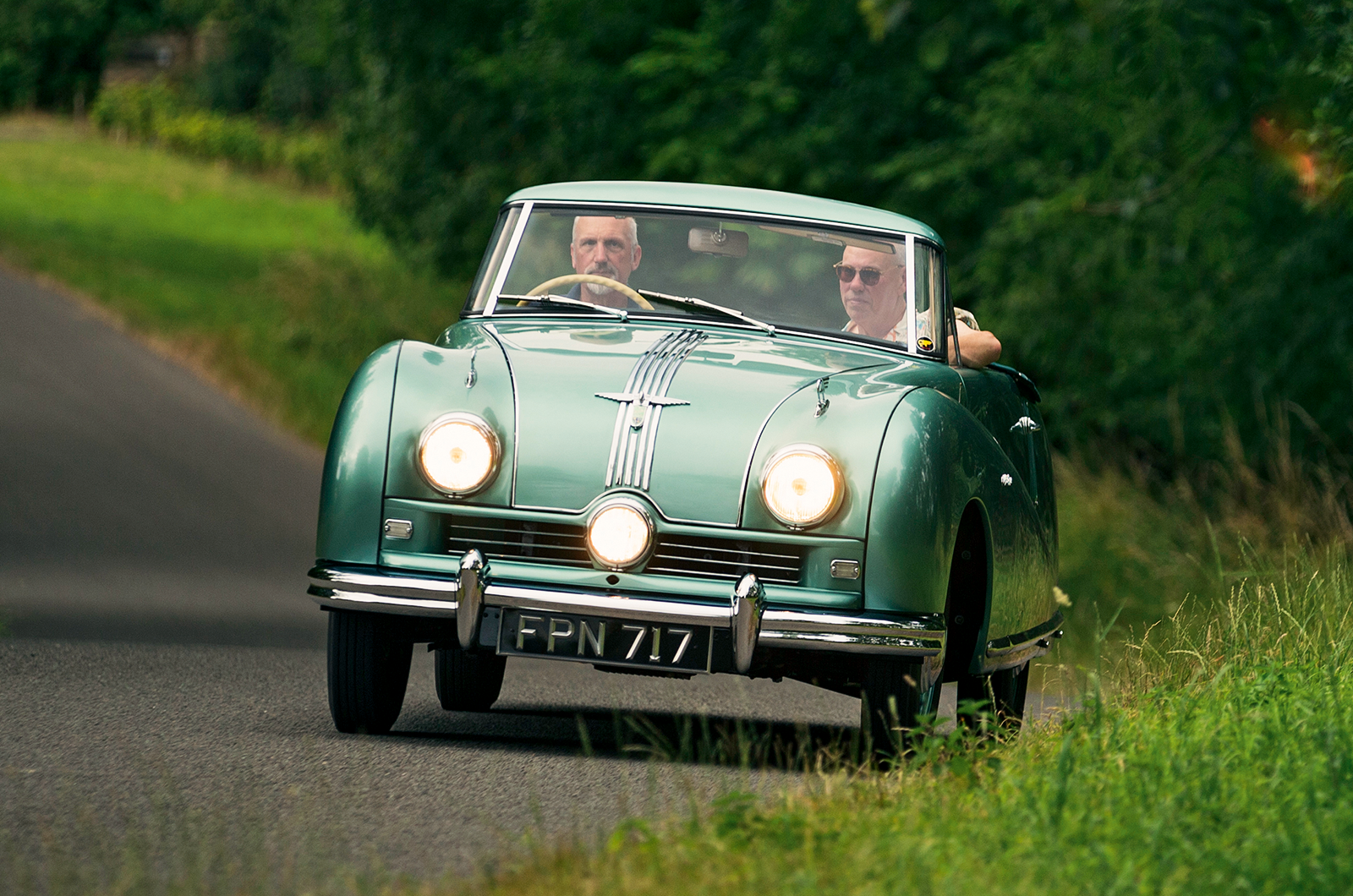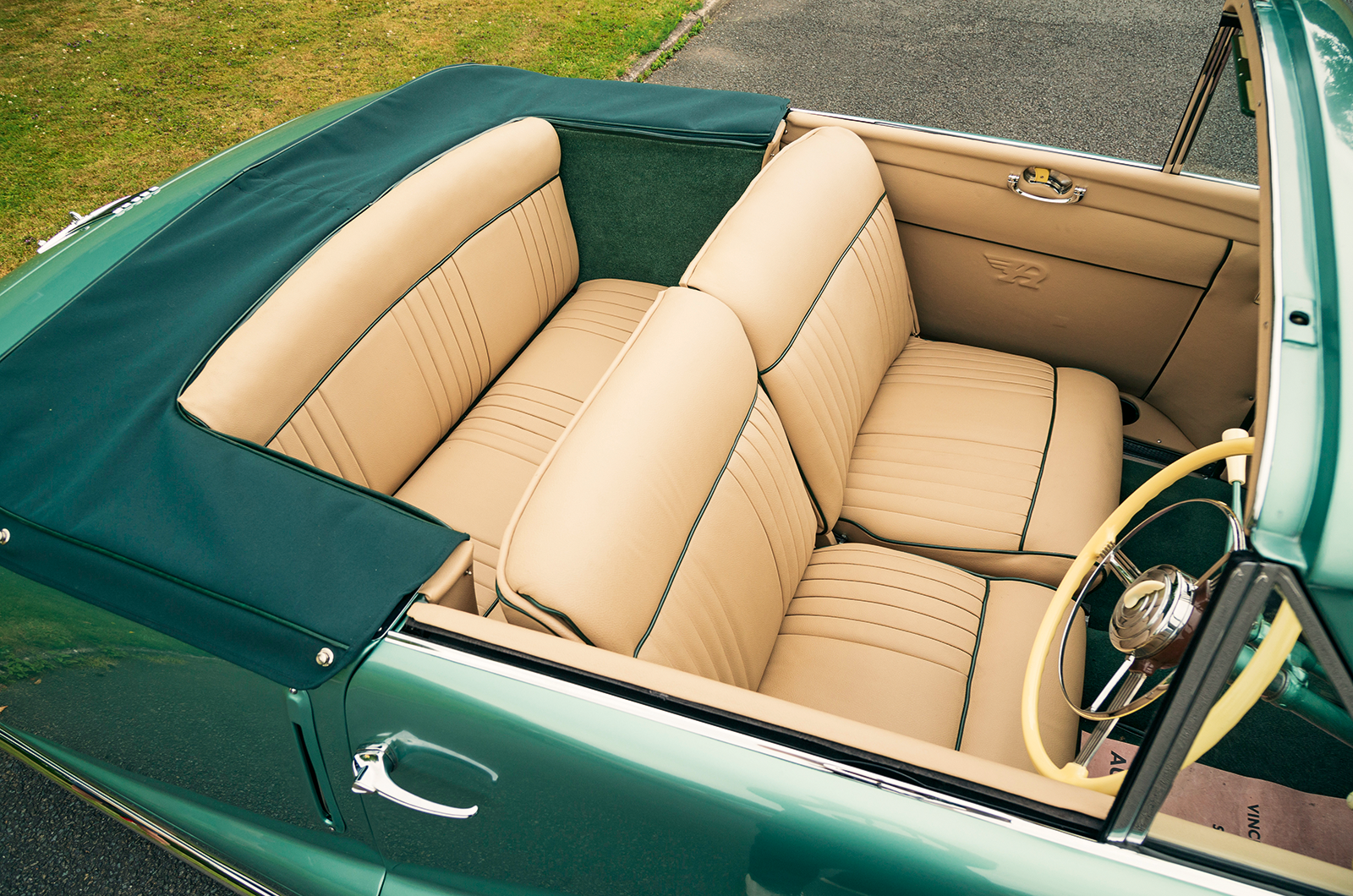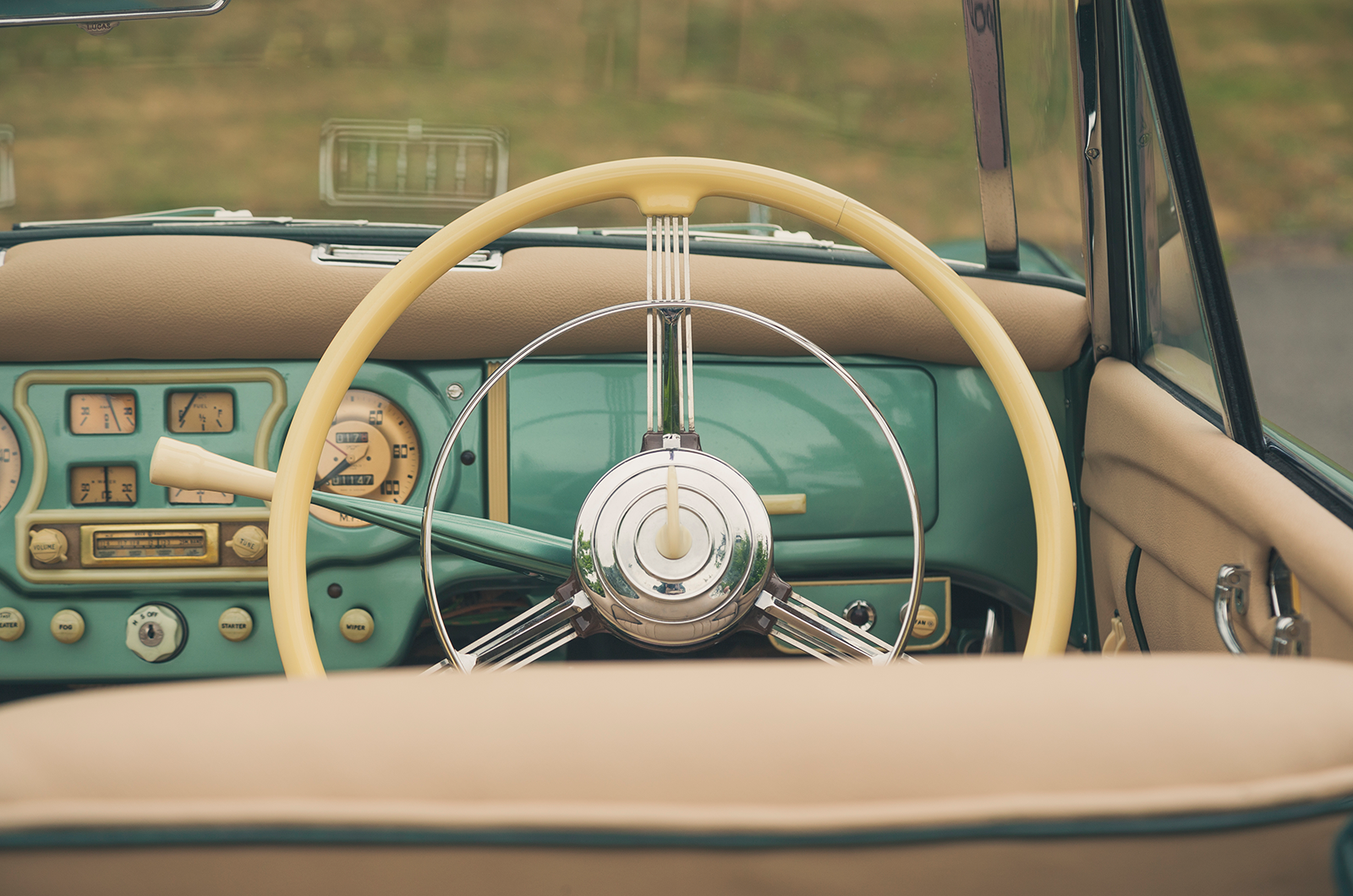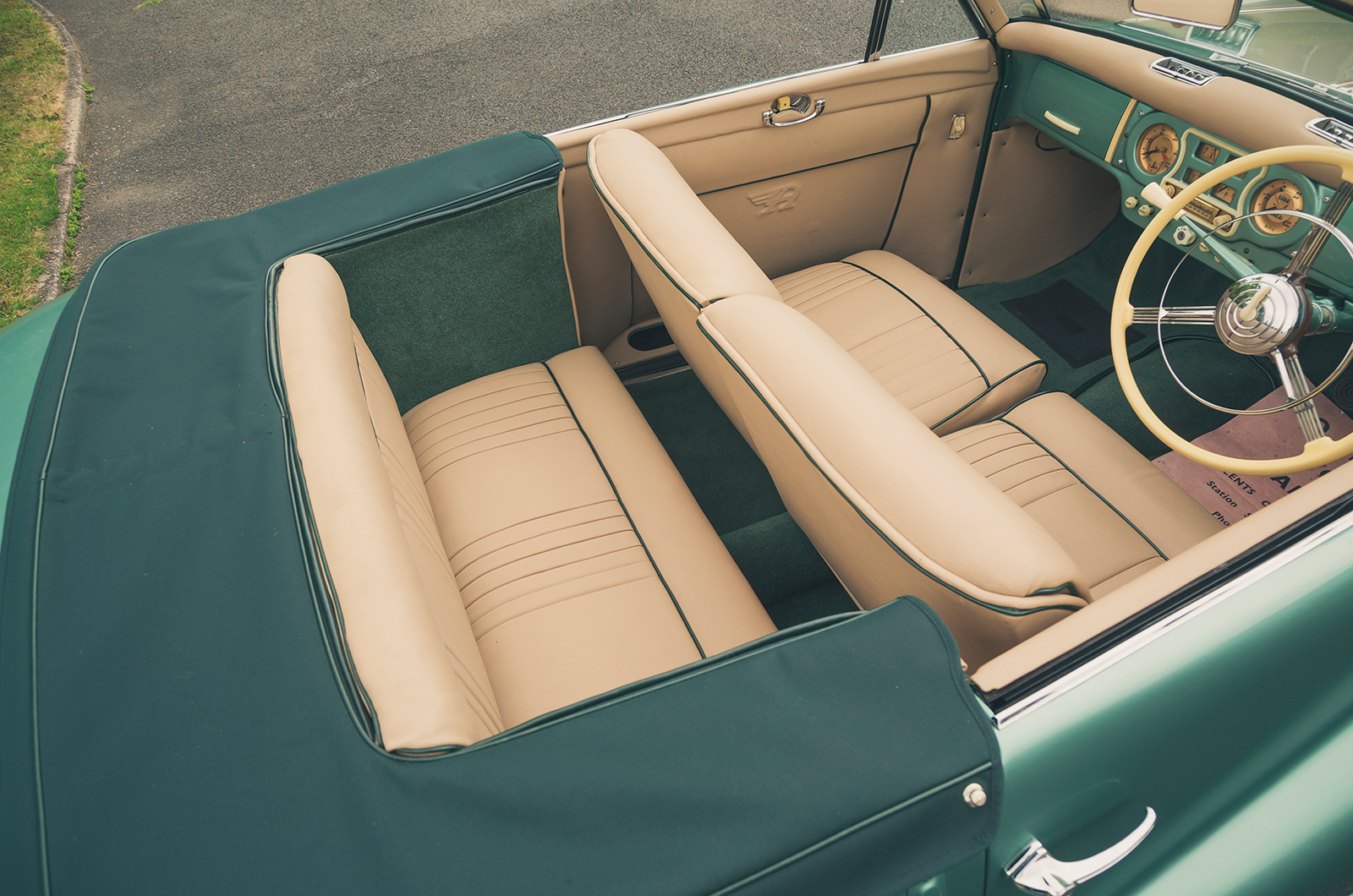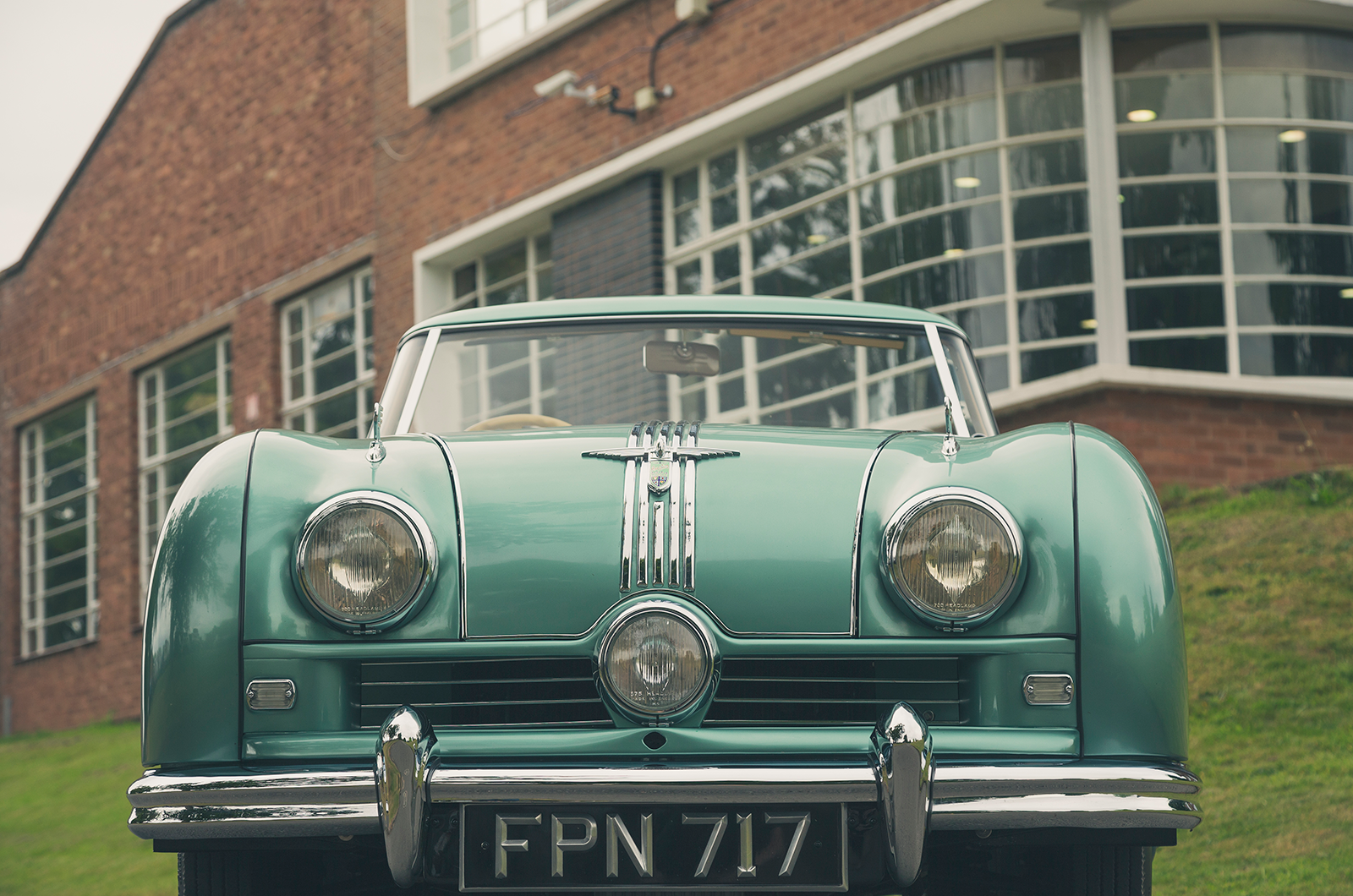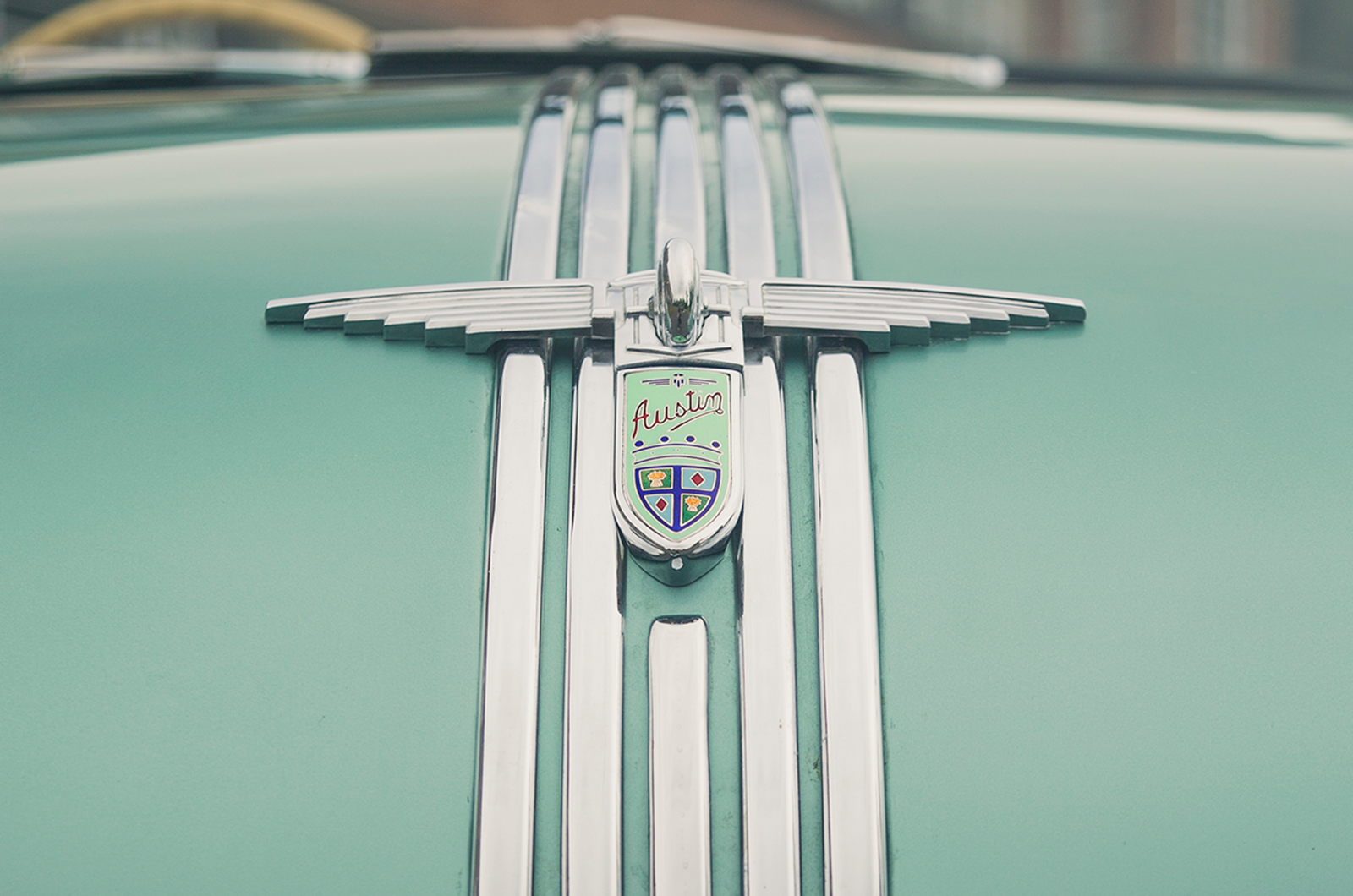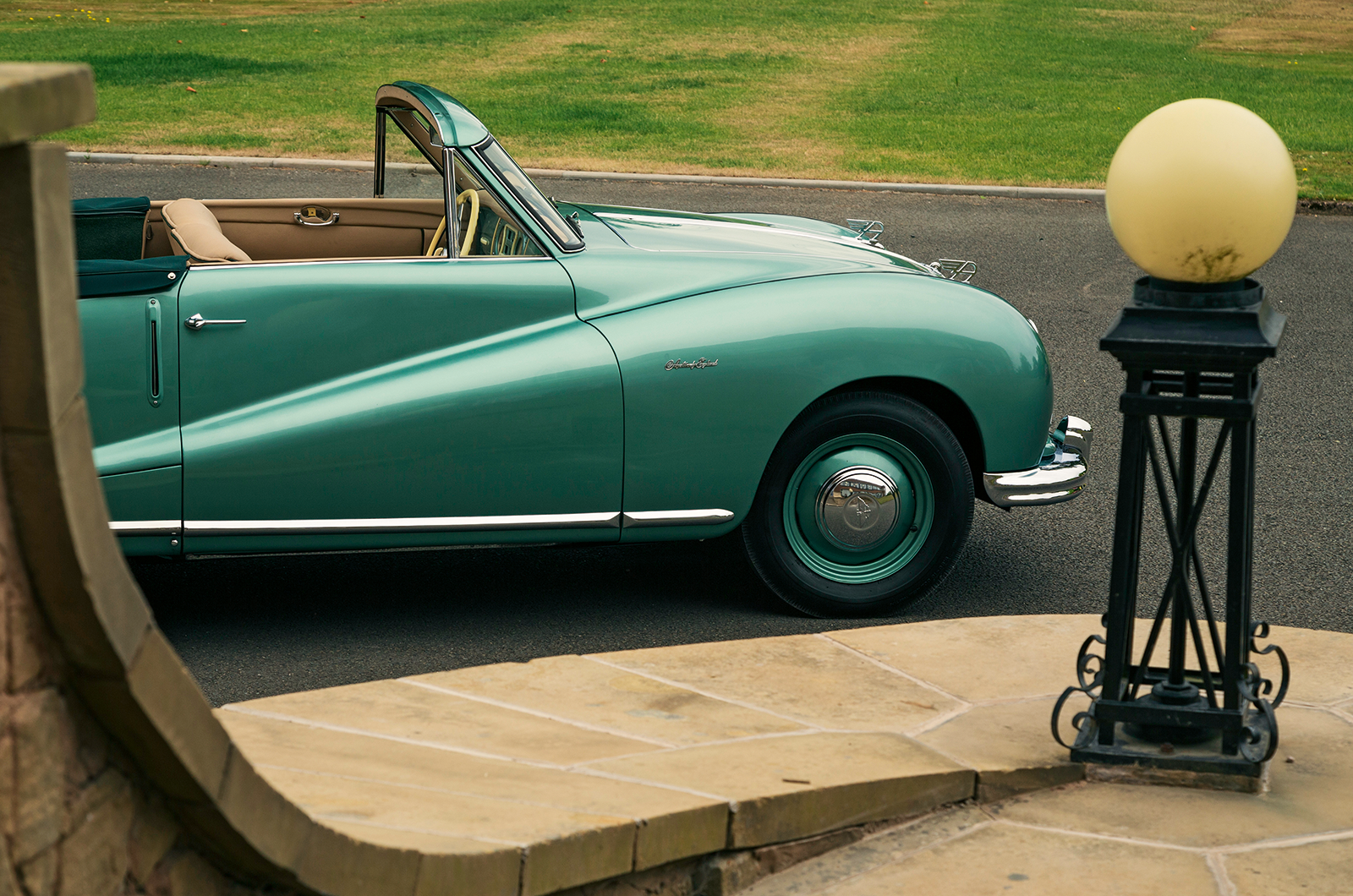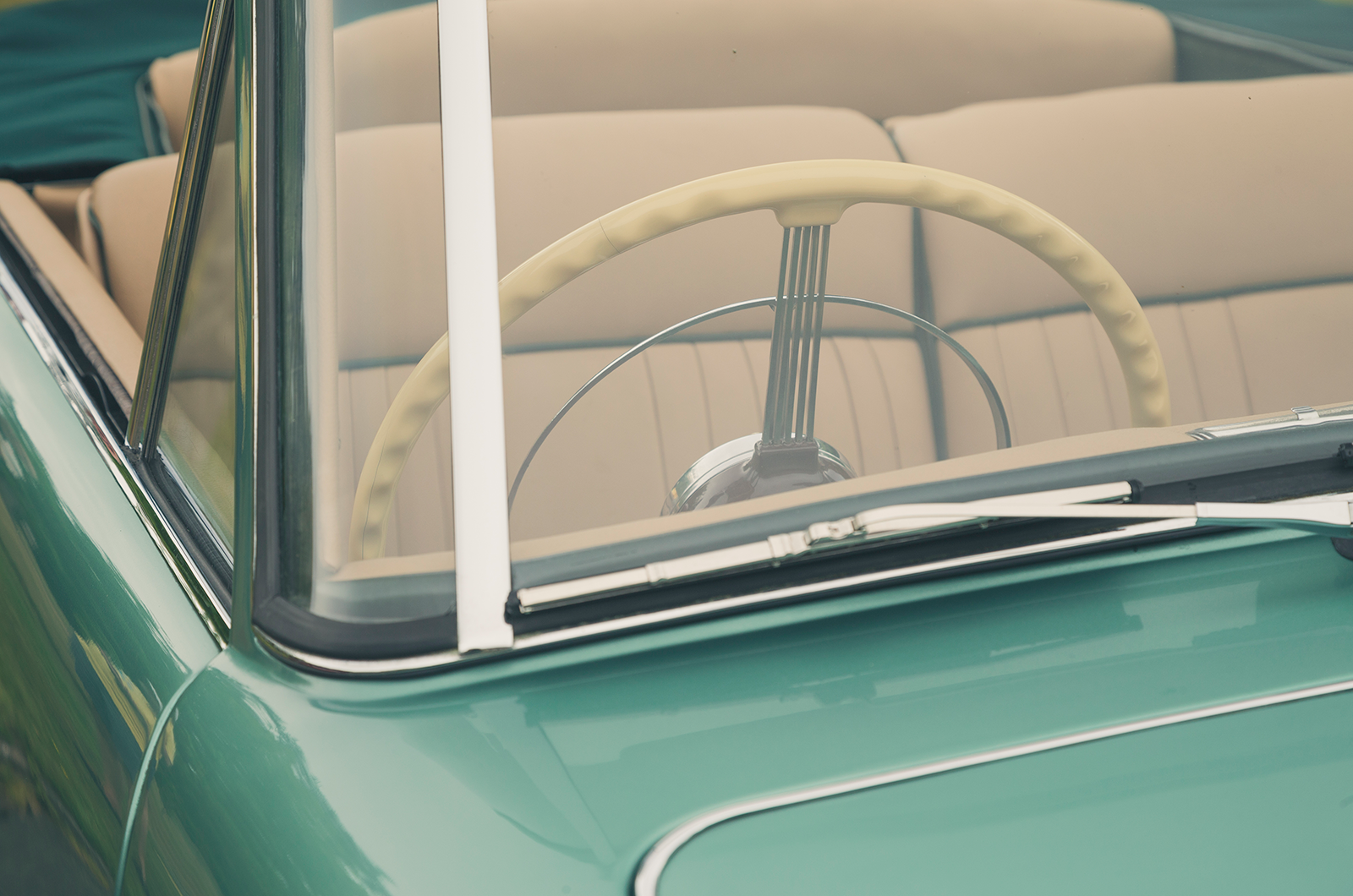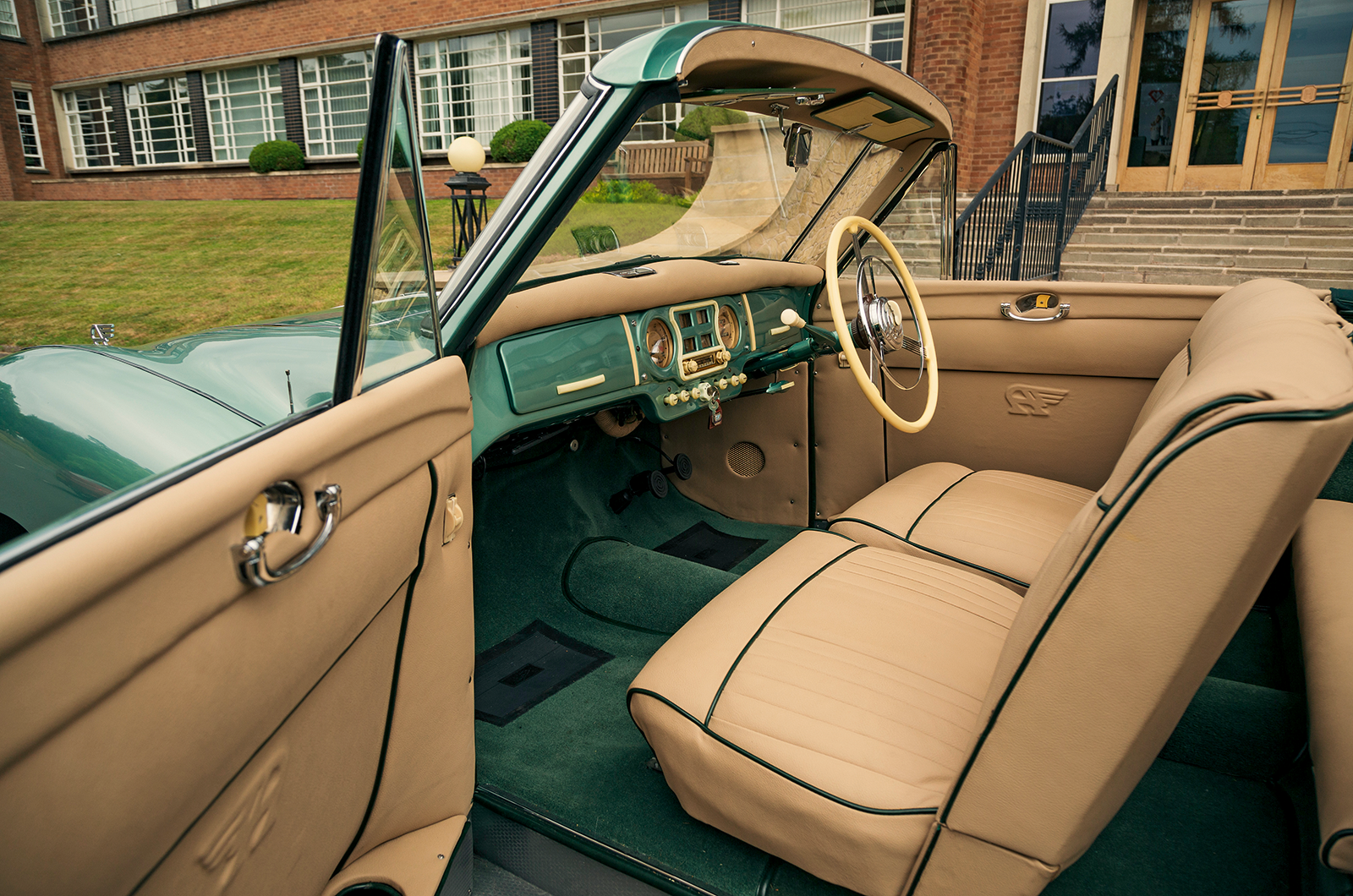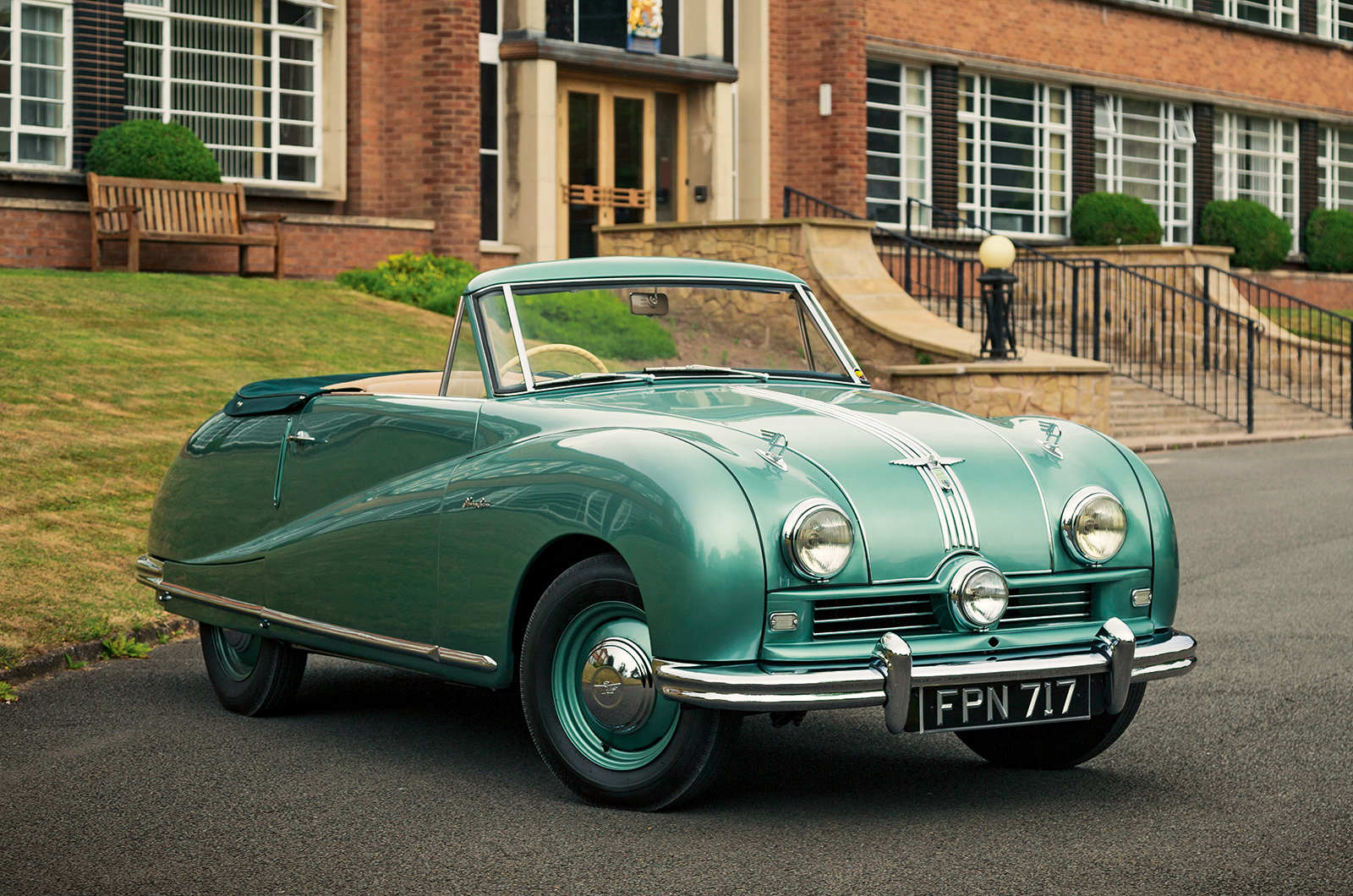Its engine was a 2660cc in-line ‘four’ based on Austin’s 2.2-litre overhead-valve Hampshire and Hereford A70 unit, but it wasn’t a bored-out version of that block.
The casting was known as the A90, the block and head being wider, and would later be deployed in the Austin-Healey 100.
Over the years a fair proportion of the 7981 Atlantics built (both convertible and coupé) have surrendered their internals to keeping early Healeys on the road, making the four-seater Austin a relatively endangered species in either configuration.
The restoration process took eight years to complete
It is thought that 3718 convertibles were built, with production ending in December 1950, although it is possible that a few cars were assembled very early in 1951.
From January 1950 the coupé – or A90 saloon – was built alongside.
David takes up the story: “On its launch the convertible was £952 with powered hood and including Purchase Tax, or £888 without power hood and windows.”
Despite Austin’s best efforts, US sales of the Atlantic remained modest
“By 1950 this had been reduced to £824 and £786 respectively, probably brought about by efficiencies in manufacturing as the coupé was put into production alongside the convertible,” he continues.
“There was a price reduction of the Atlantic in the USA from $4006 with power hood to $2998, but this was due to a devaluation in sterling, not as a desperate attempt by Austin to sell Atlantics.”
Cynics might well have considered the company’s record-breaking attempts with the car in the April of the previous year at the heart of American racing, Indianapolis Speedway, to be equally desperate, but in reality it was a brave and commendable exercise for a brand such as Austin.
Trafficators remind you that, despite the Austin Atlantic’s futuristic looks, it’s a product of late-1940s design
As Motor Sport magazine wrote: ‘The Stock-Car Records established by an Austin A90 at Indianapolis rather take one’s breath away!
‘In sober fact the car, driven for three-hour spells by Charles Goodacre, Dennis Buckley and Alan Hess, established or broke 68 AAA-recognised standard-car records, 53 in the 3-litre class and ten in the unlimited class.
‘But the overall show – 11,875 miles at an average of 70.68mph – is sufficient in itself to prove the worth of the achievement and to put it in its true perspective.’
Austin’s head designer, Argentinian Dick Burzi, is credited with the Austin’s swooping shape
Not exactly the performance associated with the XK120 at Montlhéry, but Jaguar’s record-breaking exploits were still three years away and far more appropriate to a company with designs on winning Le Mans.
Yet, despite all the favourable attention it received, the Atlantic failed to ignite US sales, which ended up being politely modest despite the recognition of the car’s quality, both in its own right and against smaller domestic competition.
However, it did prove popular throughout the Commonwealth and particularly so in Australia, where the car still has a strong following today.
It’s hoped that one day FPN 717 can be reunited with The Stargazers
By nature of its design, finding any 70-year-old convertible that has been subjected to the climate of this green and pleasant land is hard enough, and particularly so one that still has a floorpan.
But with so much of its production having been shipped abroad, finding a healthy Atlantic in the UK is nigh-on impossible.
FPN was built in December 1950 with body number 3688, so is one of the last convertibles made, and found its first owner the following May in Battle, East Sussex.
The Austin A90 Atlantic convertible was available with or without a powered hood
“Two years later it was bought by Mr James Scott of Ringwood, Hampshire, and he owned the car until at least 1967,” David continues.
“It then appeared on sale for £155 with London Motors (Highbridge) in Somerset and was sold by that firm after having had a respray in a Jaguar white and being fitted with a replacement vinyl hood. At that time the recorded mileage was only 37,000.
“By 1972 the car was with a Stanley Burman in Tottenham, London, and it was from him that Cropper purchased the A90.”
Seafoam Green spills into the Austin’s interior with charming effect
On removing the Atlantic from its tomb, David found that its mileage sat at 46,000 and, despite the repaint, it was an unmolested, very original survivor.
On jet-washing the car, he found that underneath the white paint-job was the original metallic Seafoam Green and, regardless of the low mileage, it was obvious that it would need a full restoration.
The paintwork was lifting, the Maize upholstery with green piping was disintegrating and all of the chrome had gone rusty.
The Atlantic looks, drives and rides like new
The engine would not start and the car was undriveable – he later discovered that the clutch had been put in back-to-front.
Yet this, and its long-term storage, had probably saved the Austin.
Determined to return the convertible to its original, factory-dispatched state, and to do the majority of the work himself, David embarked on a marathon eight-year restoration.
To his credit – and the car’s good fortune – he was determined not to cut corners and persevered to maintain originality, even when faced with the 42 hydraulic joints incorporated into the hood mechanism.
This car, with body number 3688, is one of the last Atlantic convertibles produced
“I wanted future generations of enthusiasts to be able to study the Atlantic and know exactly how it was when it left Longbridge,” David explains.
The quality of the restoration goes a long way to highlighting the level of craftsmanship and design, quirky though it may be, showcased in the company’s top-of-the-line convertible.
The lengths to which David has gone to demonstrate this can’t be commended highly enough. Restoring the interior alone would faze most professionals, from the unique switches (a number of which were found in Australia) to the beautiful cream steering wheel.
‘Today the Atlantic is a largely forgotten symbol of the post-war export drive, yet it was quite the talking point at its debut’
The result is a car that could well hold its own on the golf course at Pebble Beach – yes, it’s that good – and after a brief drive between photos, I can confer it rides as well as it did the day it left Longbridge.
I’d always intended that my reunion with FPN should also, at the very least, be with Ricky from The Stargazers, but in a strange twist of fate the band reformed, after 39 years apart, to play a one-off concert in Italy the week we were scheduled to meet Dave and the Austin.
Hopefully they will be reunited soon. We’ll just have to Watch this Space…
Images: Luc Lacey
Enjoy more of the world’s best classic car content every month when you subscribe to C&SC – get our latest deals here
READ MORE
Austin A90 Atlantic vs Riley RMC: missing the mark in style
Austin-Healey 100S coupé: the boss’ choice
Future focused: Austin A40 vs Ford Anglia vs Triumph Herald
Julian Balme
Julian Balme is a regular contributor to Classic & Sports Car and the owner (and driver) of many wonderful classics
